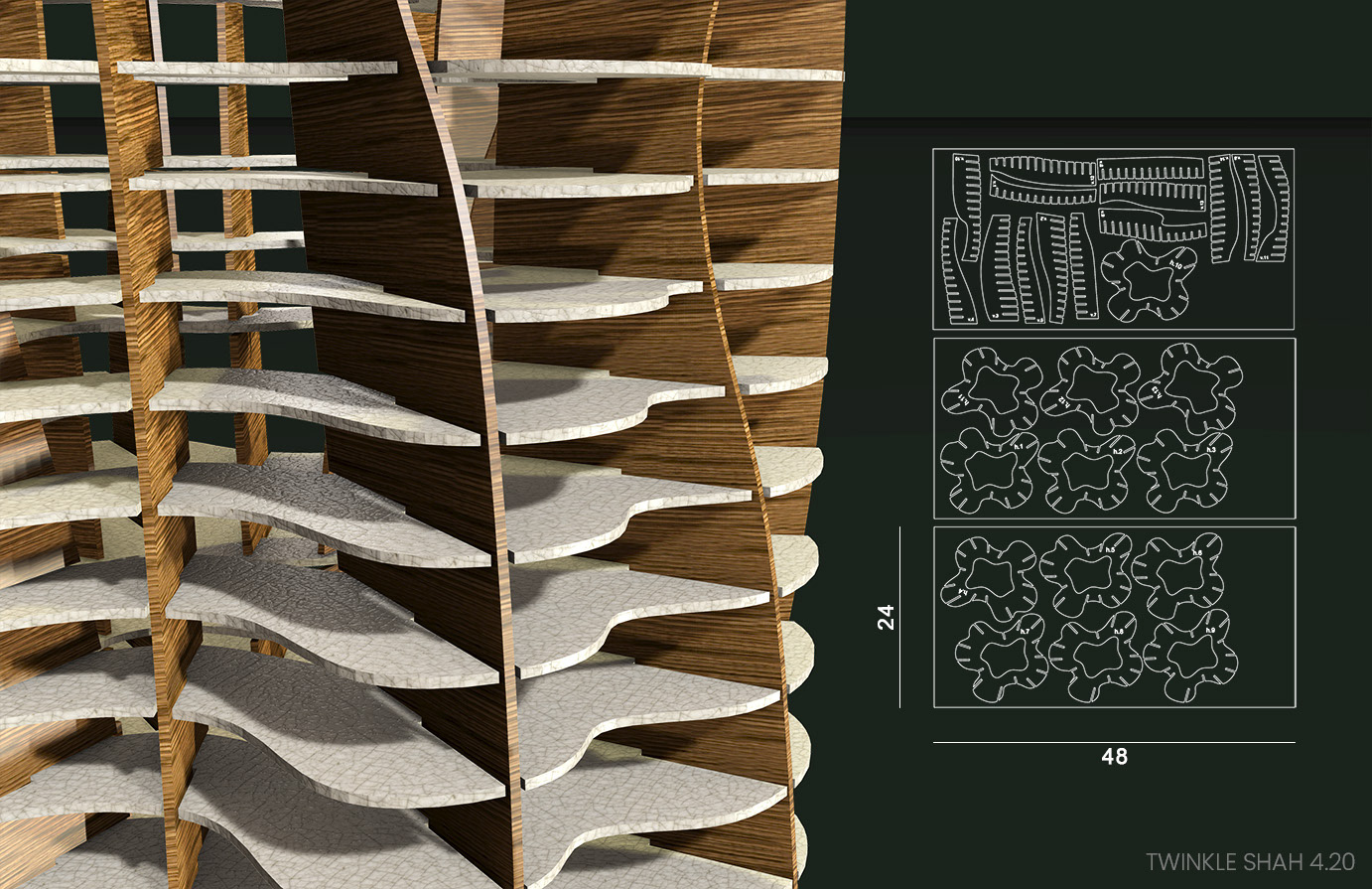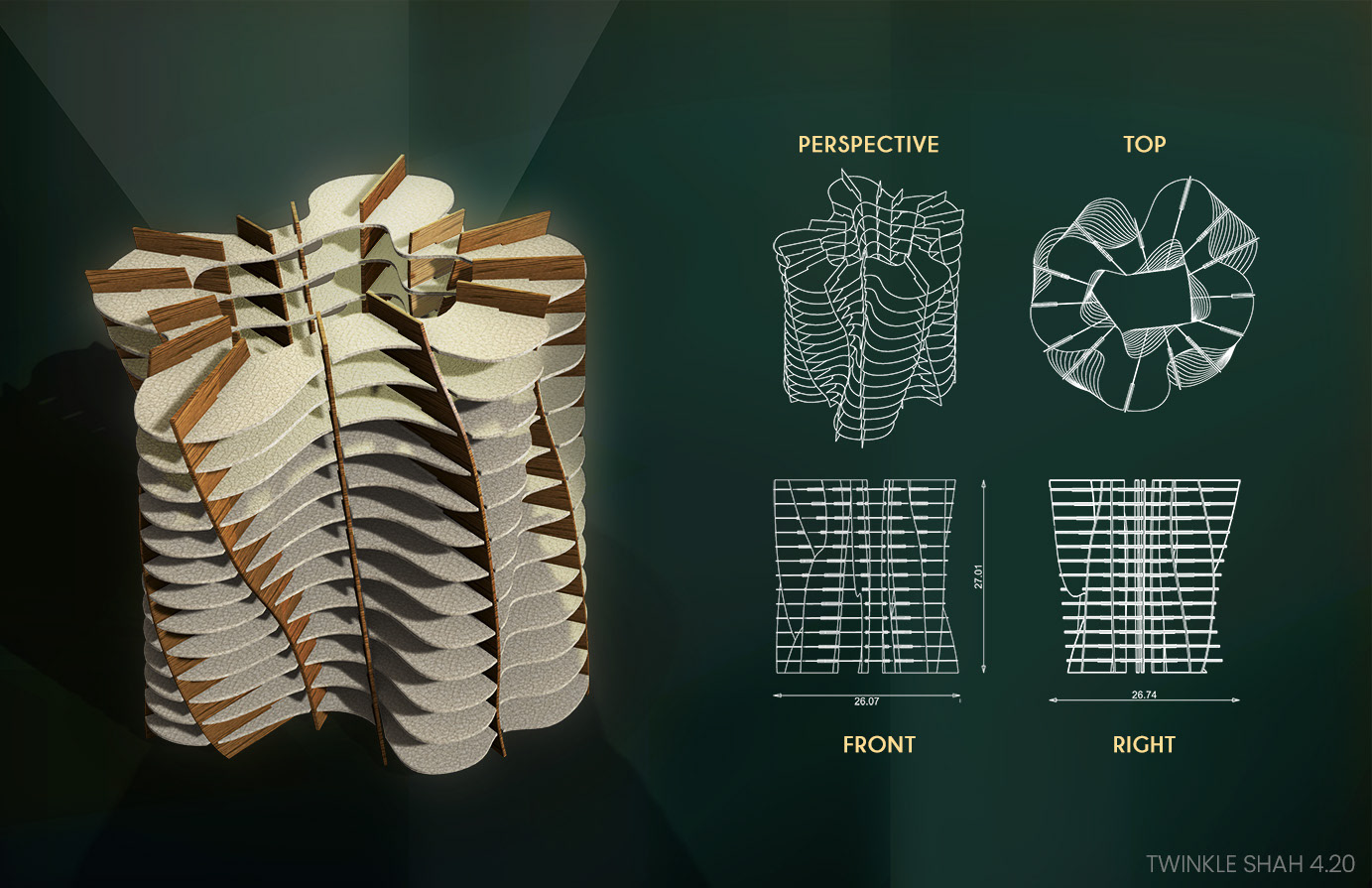PROBLEM - Unfortunately, the creation of several furniture pieces involves removing life forms from the earth, whether it be trees and vegetation, or the living beings residing in them. Sustainability is becoming an increasingly important topic to consider and advocate for as designers. How can we imagine an artifact for the home to address this issue?
goal - create a household furnishing that is inspired by nature and serves as a reminder of the importance of sustainability. The design should include a waffle structure of intersecting co-planar surfaces, assembling into an organic form.
Proposed Solution - I decided to create a floor lamp (ironically) inspired by an artifact resulting from human destruction of nature: a tree stump. Since this lamp would be constructed using materials from the tree that was cut down; I wanted to pay homage to what is left behind of the tree for the creation of this lamp. This serves as a reminder of our actions, and allows us to be more grateful and conscious of the impact we left.
Modeling Process - To begin building this lamp, I drew an organically shaped closed curve that had that resembled the base of a tree stump. I then drew another similar shape above, and lofted the two curves. Then, to carve out the inside for where the lightbulb would be, I created a second smaller loft inside the bigger one. After that, I did a Boolean Difference to make an internal hole.
From this massing model, I produced vertical and horizontal components using the Contour and Section commands. Then, I used a piping method to make all the intersections into two pipes each. After that, I created notches using the Split command with the pipes and the horizontal and vertical components (which was tedious). After this step, I gave material thickness to each component.
From this massing model, I produced vertical and horizontal components using the Contour and Section commands. Then, I used a piping method to make all the intersections into two pipes each. After that, I created notches using the Split command with the pipes and the horizontal and vertical components (which was tedious). After this step, I gave material thickness to each component.

Massing Model and Intersecting Planes made from it

Color Coded Layers of Vertical and Horizontal Planes
Color/Material/Finish Considerations - The materials I used in Rhino Renderer were Crackle Porcelain for the horizontal components, and Zebrano Wood for the vertical components. The wood grain paired with the porous crackle finish achieved a nice variety and contrast. Additionally, the light would play well with these materials, and serve as a unique earthy, mid-century modern piece when turned off.
TOOLS USED - Rhino 5, Rhino Renderer, Photoshop, Illustrator
final product -










